by Joe Domaleski | Nov 18, 2024 | Blog, Business, Columnists, Community, News Center, Opinion
As I sit down to write this, I can’t help but think of a certain line from one of my favorite books—The Hitchhiker’s Guide to the Galaxy: “So long, and thanks for all the fish.” Douglas Adams captured the bittersweet absurdity of goodbyes so perfectly, and it feels fitting now as I prepare to write my final column for this online newspaper. After several wonderful years, the time has come to move on. But endings are just new beginnings in disguise, aren’t they?
Writing for this paper has been a privilege and an honor. It’s rare to find a place so dedicated to free speech. I haven’t always agreed with the content and tone of some of my fellow writers, but I’ve always respected the importance of free speech. Did you know there’s content going all the way back to 1998 on this website? It’s an amazing treasure trove of news, opinions, and information that’s been archived for your reading pleasure. I hope the archive lasts well into the future.
I owe much to Cal Beverly, who gave me free rein to write about whatever I wanted, and so I did—sometimes boldly, sometimes cautiously, but always honestly. Actually, I need to thank both Cal and Joyce Beverly for trusting me with this space. Writing these columns has been a journey of self-discovery. It’s far easier to criticize than to create, and this experience has taught me to truly appreciate the art of turning thoughts into words.
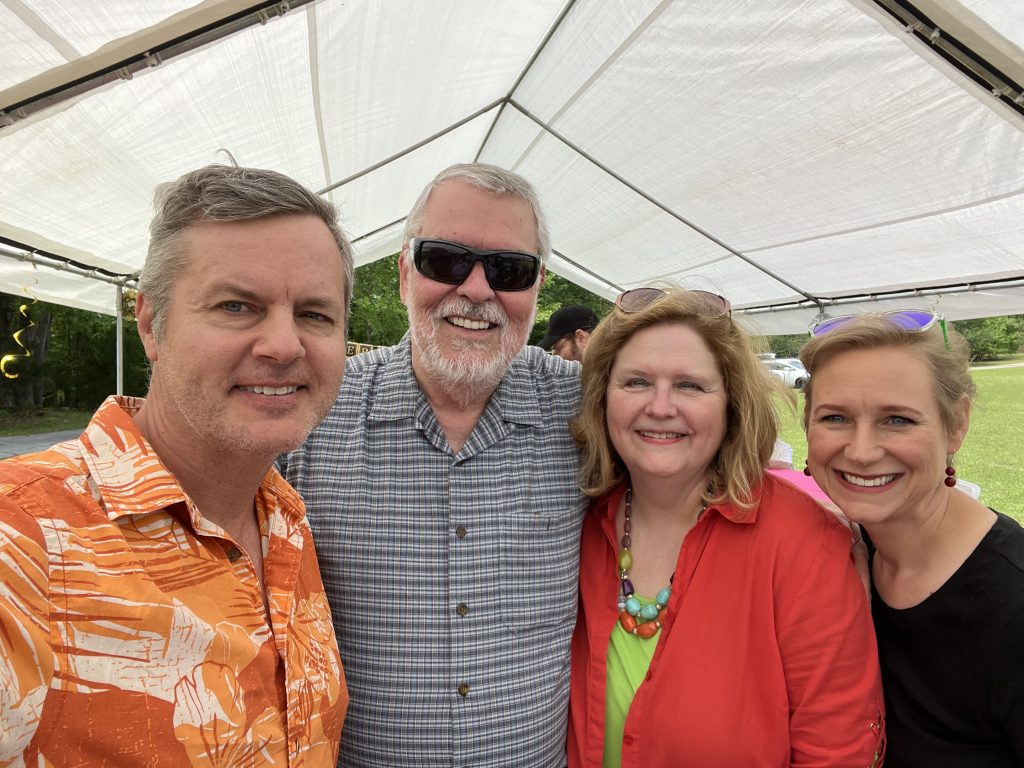
Joe Domaleski, Cal Beverly, Joyce Beverly, and Mary Catherine Domaleski on the occasion of Cal’s birthday. Photo/Peggy Thomas
Thank you, dear readers. Over the past few years, many of you have stopped me in person to share a kind word about my columns, and those moments have meant so much. Writing here has helped me channel my own thoughts and feelings—sometimes chaotic, sometimes clear—into something meaningful. It’s been a way to reflect on life, its ups and downs, and hopefully become a better person along the way.
This goodbye isn’t as final as it might seem. While I hope you’ll continue to enjoy and support this site, I also encourage you to follow me over to The Fayette News and The Newnan Times-Herald, where my columns will now be featured. Whether you prefer reading online or flipping through the pages of a printed newspaper, you’ll find my work there going forward. Your support has always meant so much to me, and I look forward to continuing this journey with you in these new spaces.
As Douglas Adams wrote, “So long, and thanks for all the fish.” It’s been an extraordinary ride, and I hope you’ll join me for the next chapter.
[Joe Domaleski, a Fayette County resident for 25+ years, is the owner of Country Fried Creative – an award-winning digital marketing agency located in Peachtree City. His company was the Fayette Chamber’s 2021 Small Business of the Year. Joe is a husband, father of three grown children, and proud Army veteran. He has an MBA from Georgia State University and enjoys sharing his perspectives drawing from thirty years of business leadership experience. Joe is a recipient of the Peachtree City Rotary Club Business Leader of the Year Award for 2024. Sign up for the Country Fried Creative newsletter to get marketing and business articles directly in your inbox. You can connect with Joe directly on LinkedIn or follow his new blog Marketing Data Science for more insights and updates.]
by Joe Domaleski | Nov 11, 2024 | Blog, Business, Columnists, Community, News Center, Opinion, Top News
Happy Veterans Day, and thank you to everyone who’s put on a uniform to serve our great country. Unlike Memorial Day, which is a day of remembrance for those who died in service, Veterans Day is a chance to celebrate and give thanks to those who’ve served in our nation’s Armed Forces. Today, we honor everyone who served, regardless of their job, rank, or branch—they answered the call, and every role was essential to the overall mission. I’m grateful to all the veterans out there and thankful for my own opportunity to serve. In the spring of 1985 I enlisted in the U.S. Army and attended Infantry basic training at Ft. Benning (now Ft. Moore) during that summer.
The Realities of Boot Camp
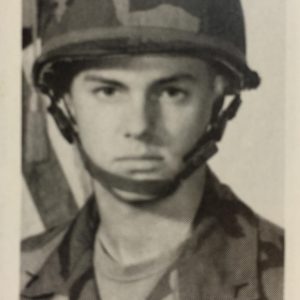
Private Joe Domaleski. My bootcamp photo from June 1985. Photo/US Army Infantry School
Boot camp was my first real taste of Army life. When I arrived on base, things got serious really quick as the military barber shaved off my 80’s mullet and left me with a bald head. Those summer days in the south Georgia heat were long, tough, and intensely focused. Training pushed us physically and mentally to our limits. In the Army, there’s no mistaking the purpose behind every moment. Everything we did was all about mission, discipline, and learning to rely on each other. From pre-dawn workouts to the long drills, every bit of it demanded we look past ourselves and see our place in the bigger mission. It may seem weird, but I miss those days of being on a team serving a bigger purpose – maybe now more than ever.
Civilian life, of course, is very different. In the business world, people tend to focus on their own goals and individual success. Boot camp was a wake-up call in that regard—it taught me the power of teamwork, structure, and responsibility to a cause beyond my own. Those lessons stayed with me throughout my military career and have shaped my approach in business to this day. Honestly, I think that’s one of the biggest shocks a soldier faces when they take off the uniform—it’s no longer about the mission but more about each person looking out for themselves. In the military, we took care of each other. In civilian life, people are often more self-focused, looking out for themselves, often to the detriment of others or to gain an edge over someone else.
College, ROTC, and Becoming an Officer
After basic training, I was a member of the Boar’s Head Brigade, the University of North Georgia’s award-winning ROTC program in college. ROTC balances the regular academic experience with the rigors of military training. ROTC had a different flavor than boot camp—more leadership-oriented but just as demanding. Each training camp, from field exercises to leadership drills, added another layer to my understanding of what it meant to serve and lead. Airborne school was one of the highlights, teaching me how to take leaps—literally out of a plane—and trust the process, no matter how scary it seemed.

Me on my graduation and commissioning day at UNG/NGC In June 1989. Photo/Ed Domaleski
All of this led up to my commission in June 1989, where I took the Army officer’s oath:
“I do solemnly swear that I will support and defend the Constitution of the United States against all enemies, foreign and domestic; that I will bear true faith and allegiance to the same; that I take this obligation freely, without any mental reservation or purpose of evasion; and that I will well and faithfully discharge the duties of the office upon which I am about to enter; So help me God.”
Taking the Army officer’s oath was a serious commitment. Unlike a civilian job contract, an Army commission doesn’t simply “expire.” When officers are commissioned, it’s considered a lifetime appointment, meaning they retain their rank and status even after they leave active duty. This was an oath not to serve any single person, but to protect and defend the Constitution against all enemies, foreign and domestic. The focus of this oath isn’t a President, a commanding officer, or even the military itself—it was the Constitution, representing the rights, freedoms, and responsibilities of the entire nation.
In most civilian jobs, there’s no equivalent to this kind of oath. People agree to a set of tasks in exchange for salary and benefits—an arrangement based on economic gain. But this oath was different. It meant devoting myself fully, not for personal benefit, but to uphold a commitment to the country and its values. In civilian life, success is often measured by status, fame, and money. I still don’t understand why our country rewards greed or why many of my peers in business are always trying to “one up” each other. As a soldier, you work as part of a team, with a shared mission to overcome a known adversary. This sense of duty left a lasting mark on me and continues to guide how I serve my community today. Looking back on my 30 years as a civilian, I might have made more money by putting myself first, but that same sense of military duty drives me to put others first and money second.
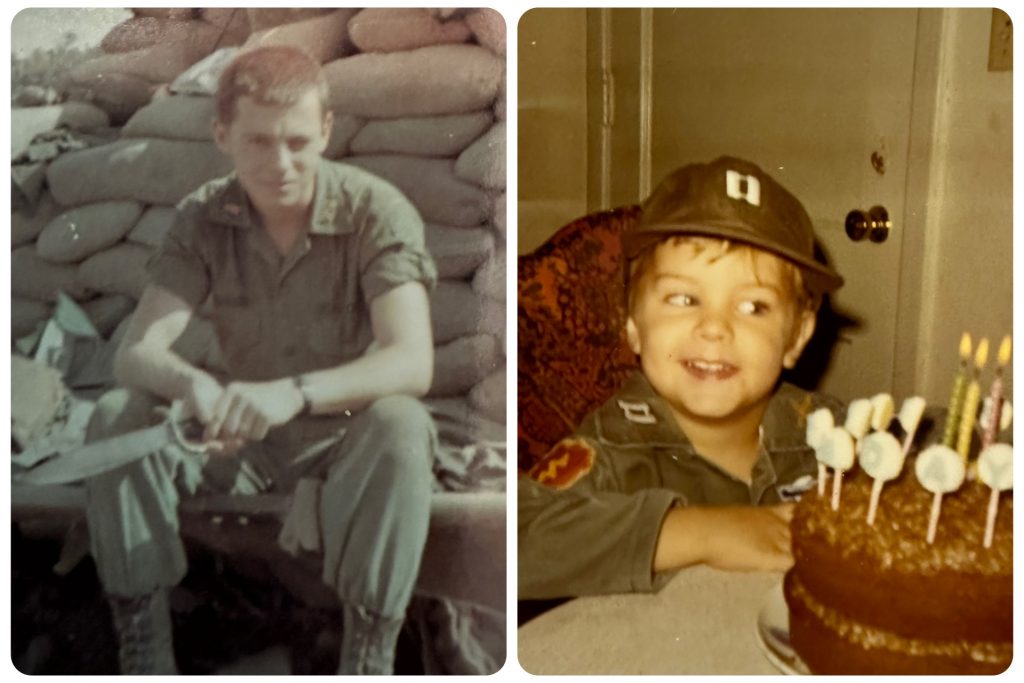
My father served as an Infantry officer in Vietnam. He’s been my hero and I’ve always wanted to follow in his footsteps, even when I was little. Photo/Jean Domaleski
Living by Army Values and the Warrior Ethos
The Army Values are: Loyalty, Duty, Respect, Selfless Service, Honor, Integrity, and Personal Courage. They form the foundation of how a service member lives and serves. Loyalty is about unwavering commitment to the Constitution, the Army, and fellow soldiers. Duty means always fulfilling our obligations, and Selfless Service requires putting others before ourselves. Honor and Integrity demand that we uphold what is right, while Personal Courage pushes us to confront fear and adversity head-on. These values guide soldiers in every decision, but in civilian life, they’re not always as visible. In fact, oftentimes the opposite is seen and encouraged. Many people are quick to put themselves first, or to compromise on integrity for personal gain. I know that I’ve fallen short of the Army Values, but I do aspire to uphold them even outside the Army.
The Warrior Ethos goes further, promoting a mindset that soldiers carry with them in all aspects of life. It teaches us to:
• Place the mission first
• Never accept defeat
• Never quit
• Never leave a fallen comrade
In the civilian world, people often prioritize personal goals over a shared mission, focusing on individual success rather than team outcomes. “What’s in it for me?” seems to be how people these days evaluate life choices. Many quit when things get tough, and the drive to persevere can feel rare. The Ethos’ commitment to “never quit” has been a source of strength for me, especially as a business owner. There were times when economic challenges made it tempting to pack it up, and some even encouraged me to do so. But that Ethos—to see the mission through, to keep pushing despite setbacks—has kept me going. This dedication to the mission, even in the face of hardship, has proven to be one of the greatest lessons I carried with me from my time in the Army.
Transitioning to Civilian Life
After eight years in uniform, the transition to civilian life was both a relief and a challenge. Civilian work has its own goals, often driven by the bottom line. In business, we focus on profit, market share, and growth, with less emphasis on a greater purpose. It’s easy to lose sight of the bigger picture when individual success becomes the priority. The military, while not without its flaws, operates on a very different foundation. We’re taught to put the mission and the team first, with a clear sense of service beyond ourselves.
That difference makes the shift to civilian life challenging for many veterans. In the military, we reward heroes who defend freedom, often risking their own safety. In the civilian world, however, success is frequently tied to fame or wealth—whether that’s making TikTok videos, playing sports, or closing business deals. I know our community is now a “movie town,” but isn’t it ironic that actors portraying heroes often gain more recognition and money than the real heroes they’re based on? For these reasons and more, many civilians who haven’t served struggle to fully understand what drives and motivates veterans; our values and outlook come from a place they haven’t experienced.
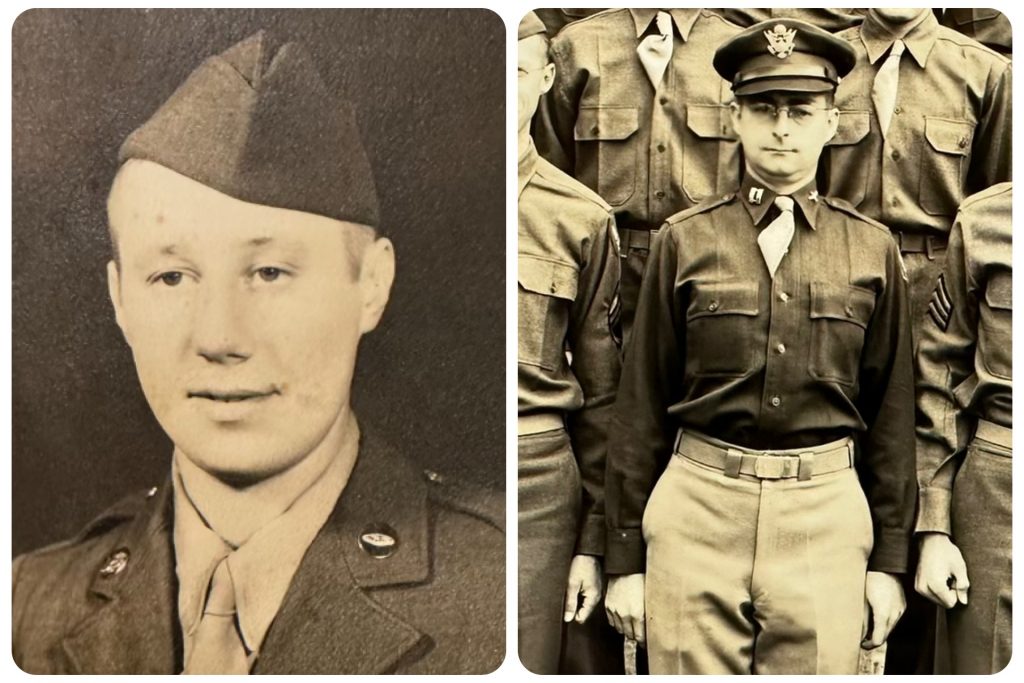
I’m a third generation soldier. My grandfathers served in the US Army during World War II – (left) Edward Domaleski, Sr. & (right) CPT E.L. Stephenson. Photo/Jean Domaleski archive
Even though I no longer wear a uniform, the Army values have stayed with me. As a business owner, I’ve tried to lead with the same commitment to service and integrity that the military instilled in me. In the Army, selfless service means putting the team and mission ahead of personal gain, and I’ve carried that approach into my work by focusing on ways to support my community beyond immediate profit. Whether it’s sponsoring local events or simply being transparent and fair with customers, putting others’ needs first is my way of honoring that value of selfless service.
In civilian life, there’s often a focus on ease and avoiding discomfort. But in the military, discomfort is a given—something we learn to push through and embrace. That mindset has been invaluable as I’ve faced hardships in business. Integrity and honor were non-negotiable in the Army, and while I’m far from perfect and often fall short of those standards, I try to live by them. Sometimes that means making less money or having less social influence than others in my position, but for me, doing what’s right and building trust are worth more than short-term gains. These values keep my business grounded in the same principles that guided me in uniform.
A Challenge for Business and Civic Leaders
This Veterans Day, as we honor the men and women who served, I want to challenge business and community leaders to bring that same spirit of service into their work. Yes, money matters—but it shouldn’t be the only thing that matters. Each of us has a part to play in making our communities stronger, and that starts by leading with integrity, responsibility, and a focus on something greater than ourselves.

Serving the community at the Fayette County Chamber of Commerce. Here I am with MG Thomas Carden, former Georgia Adjutant General, and Representative Josh Bonner, who’s also a Colonel in the Army Reserves. Photo/COL (Ret) Will Garner.
If we truly want to honor our veterans, let’s do it by living out the values they stood for. Lead with loyalty to your community, serve selflessly, and have the courage to put others first. And take a moment to thank a veteran—face to face, not just with a social media post. Building a better business and a stronger community doesn’t just pay tribute to those who’ve served—it leaves a legacy that carries forward the true meaning of Veterans Day.
To my fellow veterans, thank you. I’m deeply grateful to have had the chance to serve our country—it has made me a better person and continues to inspire me to keep going when things get tough. Our service and sacrifice will always be a part of who we are.
[Joe Domaleski, a Fayette County resident for 25+ years, is the owner of Country Fried Creative – an award-winning digital marketing agency located in Peachtree City. His company was the Fayette Chamber’s 2021 Small Business of the Year. Joe is a husband, father of three grown children, and proud Army veteran. He has an MBA from Georgia State University and enjoys sharing his perspectives drawing from thirty years of business leadership experience. Joe is a recipient of the Peachtree City Rotary Club Business Leader of the Year Award for 2024. Sign up for the Country Fried Creative newsletter to get marketing and business articles directly in your inbox. You can connect with Joe directly on LinkedIn or follow his new blog Marketing Data Science for more insights and updates.]
by Joe Domaleski | Nov 4, 2024 | Blog, Business, Columnists, Front Page, Opinion
Last week, I had the opportunity to be a guest lecturer in two entrepreneurship classes on digital marketing at Georgia State University (GSU)—thank you to Instructor Matt Bramblett for the chance. I completed my MBA at GSU over 30 years ago, and it’s a real treat to come back. Besides sharing my own experiences and knowledge, the thing I enjoy most is the dialogue and interaction with the students. It may not be this way in every department, but the GSU Robinson College of Business is full of energy and excitement. Most of the young people in my classes last week were upperclassmen about to start their careers.
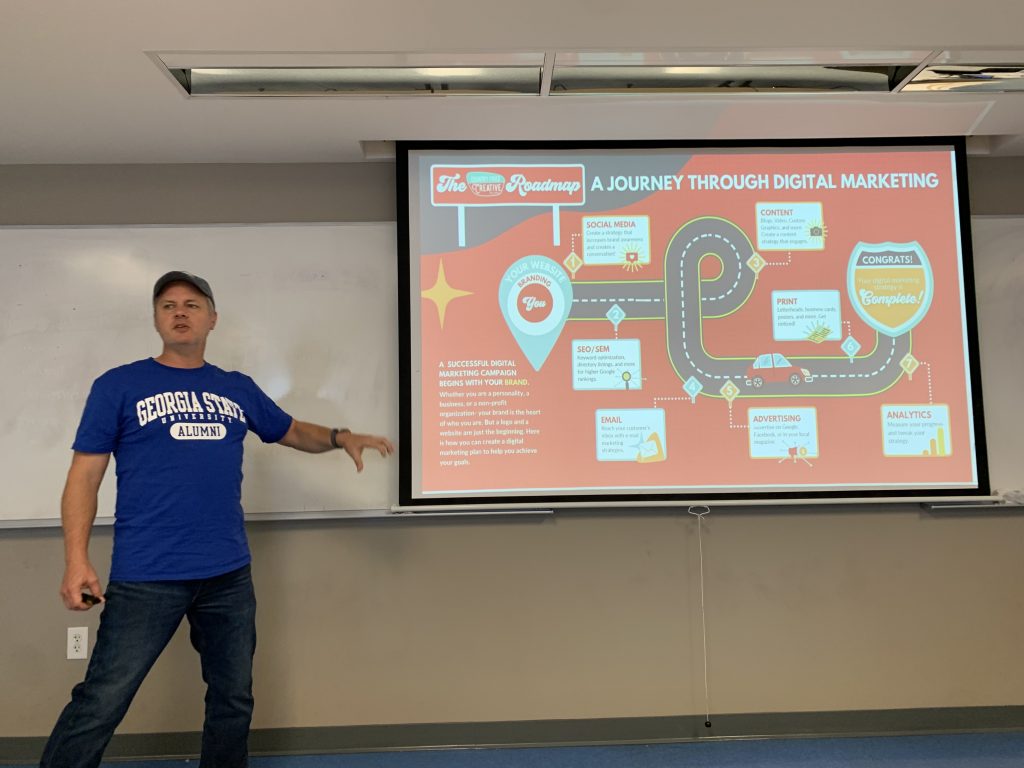
Yours truly teaching Digital Marketing at Georgia State University on 10/30/24. Photo/Michael Nelson
It’s easy to feed off their excitement and enthusiasm. Frankly, I enjoy speaking with younger people whose minds are still open to new ideas. Many of my middle-aged peers have allowed life to make them skeptical, argumentative, and downright negative. I try hard not to be that way, even if I’m not always successful. As I’ve gotten older, I’ve tried to be more deliberate about steering clear of difficult and overly competitive people who feel like they have to “win” every situation. You know the type—someone who’s read a single book or gone through a business seminar and now they’re an expert.
Back in the college classroom, it’s a totally different environment. The students are there to learn, not argue. In general, it’s a much easier setting in which to share knowledge. Having so many years of experience (and gray hairs to prove it), I rarely get stumped by student questions. It’s not that all of the questions are easy; it’s just that most of the students ask their questions with an open mind and heart. However, there is one exception, and it’s the question I dread the most.
“How do I get a job?”
Almost every class asks me that question either in person or later in a LinkedIn message. Side note—I encourage students to develop their professional networks and invite them to connect with me on LinkedIn. More about networking later in this article. Even though I know the question about getting a job (or internship) is coming, it doesn’t make it any easier to answer. I thought it might be a good idea to share my thoughts on the subject here in this column. This article is geared toward students, parents of students, job seekers of any age, college placement departments, and even employers. I’m not an expert on employment issues, but I do have experience as a job seeker and, for the past 20+ years, as an employer.
Let’s get the difficult part out of the way first. It’s my belief that finding a job is harder now than it ever was. That is the reality of the job market. The irony is that employers can’t find qualified candidates, and job seekers can’t find the right positions to meet their needs. Yes, we had it easier back when I was a young man. Within reason, if you went to college, you would get a job. Young people, your parents and I had it easier back then. We worked hard, but it was much easier to get noticed. I remember going through the newspaper, looking through classified ads for jobs. Remember classified ads? If I saw a job of interest, I would call them up on the phone and mail a cover letter and resume. It was old school, but it worked.
Unfortunately, the system doesn’t work very well now. Everything is online, which should make things easier, but it hasn’t. Many factors conspire to make job seeking a challenging enterprise.
- Increased Competition – More people are competing for fewer jobs. It’s harder to stand out in a crowded marketplace, especially with remote jobs drawing candidates from all over the world.
- Automated Hiring Systems – Although intended to simplify the process, automated hiring systems often make it harder. Applications are reviewed by algorithms, rather than manually.
- Lack of Full-Time Jobs with Benefits – Starting with Generation X, employers began slashing guaranteed retirements and benefits, moving from defined benefits to defined contribution plans (401(k) and similar).
- Higher Skill Expectations – In the past, you were hired for what you knew. Now, most people are hired for what they can actually do.
- Longer Hiring Processes – Changes in labor laws have lengthened and complicated hiring. For small businesses, the “paperwork burden” is non-trivial.
- Training Expectations – Companies used to train new employees; now, many expect new hires to be “ready to work” immediately, focusing onboarding on policies and culture instead.
- Cultural Fit – Companies have always considered fit, but today, they’re more overt about hiring based on non-skill factors like personality and diversity. It’s not my place to argue for or against this, but it does happen.
This list isn’t exhaustive, but it does cover many of the hiring barriers I’ve seen. It’s easy to get discouraged, and many people are.Even I get discouraged trying to do right by both potential clients (my selling to them is like trying to find a job) and my employees. I’m very transparent to my clients about wanting to hire locally and provide for my employees. Doing that costs money, more than if I simply outsourced like many of my competitors do. While many clients respect that, many more simply want the lowest cost. Several years ago, many jobseekers nation-wide got so discouraged that they just sat out of the job market. As an entrepreneur, I’ve found that barriers are often opportunities in disguise. A focus on marketing can help both job seekers and employers. Just as marketing connects buyers and sellers, it can connect job seekers with employers. Let’s dive in.
I believe there are three things a job seeker can do to stand out in today’s job market. I’m going to call it the:
Know, Who, and Do of job seeking.
Knowledge and Education
This is the “know” part of job seeking. To be employable, you have to know something. We spend the first two decades of life in formal education. Although I enjoy teaching, I am not a professional educator, so my comments may not use the proper terminology. There are many conflicting theories about how best to educate young people. Some institutions focus on test results and teach to those standards. As a data guy, I think that’s good—but test scores aren’t everything. Some schools take a more holistic approach, like our local school system’s Work-Based Learning (WBL) program, which I’m a big fan of. Whether testable or not, it’s important that young people know things.
If you’re pursuing a career in a specific field, you should know quite a bit about it. Employers look for that—I know I do. It’s good to be confident in your skills but not cocky. Even with years of experience, I don’t know everything and am constantly learning. I’d rather hire someone eager to grow in their profession than someone who thinks they have nothing left to learn. In an age where companies lean on AI to process information, having foundational knowledge is more important than ever. Do you know enough to prompt AI correctly and assess its results?

GSU students prepare to hear yours truly talk about digital marketing in their entrepreneurship class. Photo/Joe Domaleski
Personal Networking
Some years ago, the phrase “It’s not what you know, but who you know that matters most” became popular, and there’s truth in it. Knowing how to meet people, have intelligent conversations, and be actively engaged in a community is critical. We call that “networking,” and I’ve written previously about the subject of networking. The best way to learn about networking is to put down the books and go out and meet people. Networking will help you in many ways—both personal (maybe you’re trying to find a romantic partner) and professional (especially if you’re trying to promote yourself or your company).
Frankly, I’ve spent the last 20+ years of my career building a business that’s largely based on networking. Yes, I own a marketing agency, but most clients come from referrals. Almost all of those referrals check out our online presence. Similarly, if you’re a job seeker, make sure your professional online brand is up-to-date and something you’re proud of. Focus on your resume, online business profile (LinkedIn), social media feeds, online portfolio, project experience, and by all means, get professional headshots and pictures. You don’t have to be a fashion model, but you do want people to know that you’re a real person—not another George P. Burdell. Side note: yes, I am connected to George on LinkedIn. As soon as I enrolled at Georgia Tech, he connected with me. I’ve never met the fellow, but he seems very involved in the community!
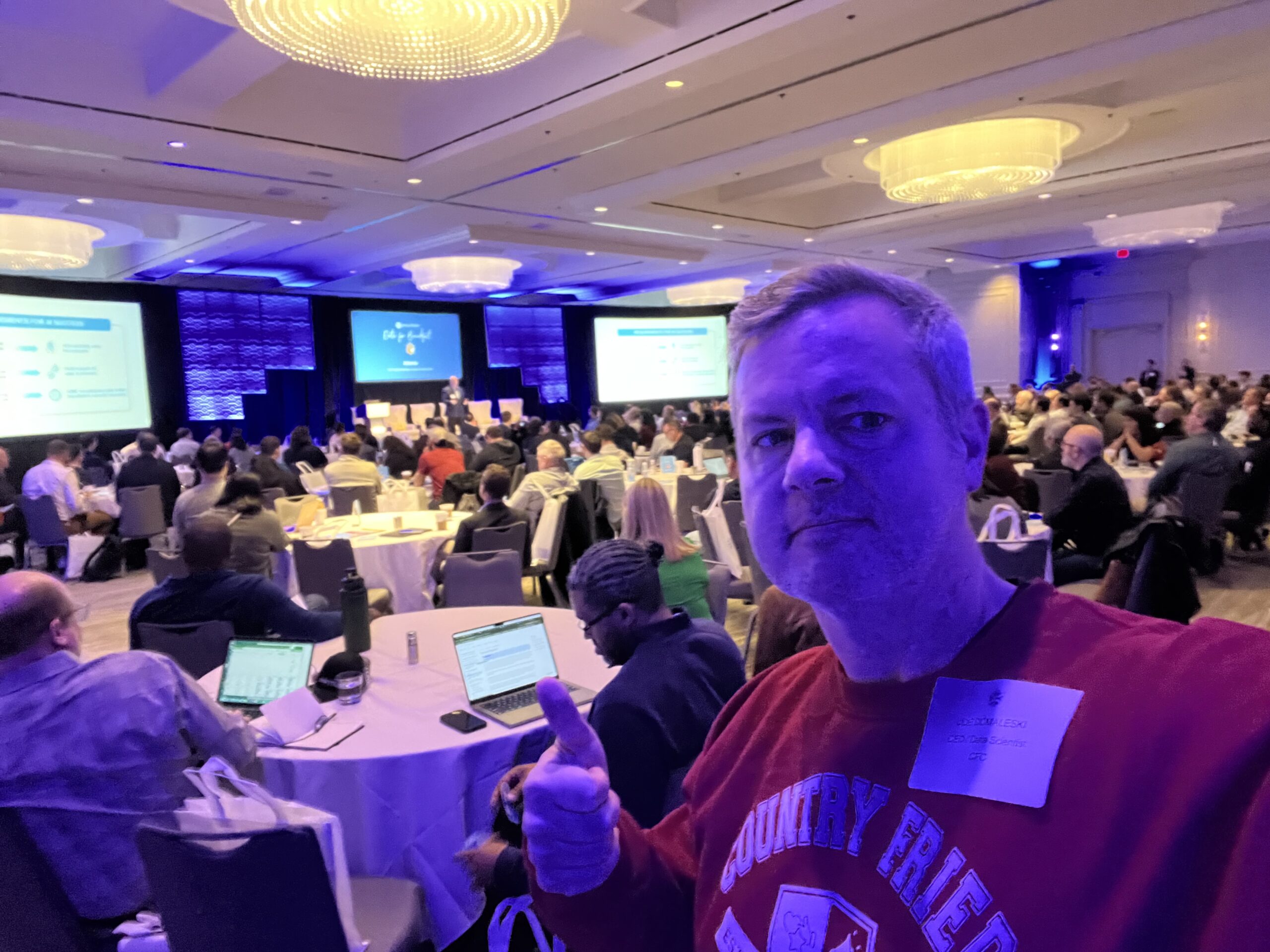
Learning and networking with other AI professionals at a conference in Atlanta. Photo/Joe Domaleski
So, how can you network and meet people? If you’re still a student, get involved in campus activities. Join the professional societies and clubs that are associated with your major and field of study. As an employer, I look at that kind of involvement, and when I was a student, I got involved as well. Many employers speak at those events, and it’s a great chance to make a connection. If you’ve graduated, stay active in professional and industry organizations. Your goal is to meet people, learn, and let people know who you are. If you do that, you’ll stand out. That’s how I’ve hired most of my employees and grown my business—through networking. Networking takes time, but it’ll help you later in life in areas not even related to job seeking. Even if you’re an introvert, there are groups out there to help you network and meet people.
What Can You Actually Do?
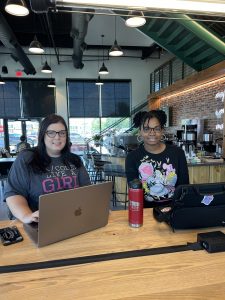
CFC Web Manager Hollie Holder (left) works with Sandy Creek student and WBL Intern Anaya Cherry. Photo/Joe Domaleski
Having a great education and knowing people used to be enough to get a job. Both of those are necessary but not sufficient in today’s job market. You actually have to be able to practice your craft and show that you can do something with your knowledge. When I got my first computer programming job, there wasn’t an Internet (not as we know it), and I didn’t have a GitHub profile (ask an IT person if you don’t know what that is) to showcase my work. I had a math/computer science degree and told my prospective employer that I knew how to program in the “C” programming language. Based on my degree and answering a few questions, I was hired. These days, you need to demonstrate work you’ve already done.
There’s an apparent contradiction here, and I’d like to clear that up. Many are looking for entry-level jobs to get experience, but even those jobs require experience. How can you get experience if you don’t have any? Simple—create something or do something and showcase it. If you’re looking for a marketing job, then make sure you have marketing experience. Volunteer at a local nonprofit to help them with marketing. You’ll help them and have something you can showcase to a potential employer. I can’t tell you how many people approach me about job opportunities for web design, but they haven’t actually designed a website yet! I’m sorry, but we’re just not in a position to train people from scratch. If your school or college didn’t have you do that (and they should), then take an online course and build your own showcase website.
The ability to show people what you can do will be important for the rest of your life, well beyond job seeking. When we’re working with prospective new clients, they honestly don’t care how much knowledge we have. They want to know what we’ve already done and what we can potentially do for them. People want to see things. Because there are so many ways to get and highlight skills online, this is a great time to let people know what you do with a professional portfolio. Writers, designers, programmers, project managers, fundraisers, analysts, and just about any professional can set up an online portfolio of their work. If you’re looking to work with me, it’s one of the first things I ask for. Don’t tell me you know Adobe Creative Cloud—show me examples of work you’ve created with it.
I am currently practicing what I’m preaching here. As many of you know from my previous writing, I’ve been working on a midlife pivot of sorts. For the first 10 years of my career, I developed some project management expertise and had a professional reputation at a regional and national level outside of our local community. Even though we’ve lived here since 1997, my wife is the Fayette County native, not me. When I started the business in 2003, I made a decision to focus more locally. For the past 20 years, I’ve been known as the local web and marketing guy. I love having the local focus, but my larger professional network has not kept pace.
Many of my peers and colleagues with whom I worked in the 90s have gone on to lead national companies. I don’t want to do that, but I do think my own professional network needs some growth (one of the many reasons I’m back at Georgia Tech). In fact, many of our local industries and larger nonprofits have begun to source services from outside our community. Like many local community leaders, I don’t like when that happens, but it’s not likely to change. I’ve come to realize that I’m not getting any younger and need to change with the times—cross off some bucket list items, if you will. In the upcoming months, you’re likely to see some changes I’m making. My business and I will continue to focus on the local community, but we will begin to broaden our geographical focus a bit, bringing our Country Fried Creative marketing creativity and analytics approach to a larger audience.
All of that to say, it’s important to show people what you can do both locally and within your profession. Geography is no longer a boundary, with so many ways to market yourself online.
Your Next Steps as a Job Seeker
Navigating the job market today isn’t easy, but those who focus on the “Know, Who, and Do” of their job search can rise above the challenges. Knowing things and knowing people is important, but it’s just as important to show that you can put that knowledge to work in ways that make a difference. By building expertise, growing your network, and demonstrating your skills, you’ll stand out—even in a crowded marketplace. I do this almost every day as I work to market and promote my own business in a noisy market.
Sure, things were simpler back in the day of newspaper classified ads and mailed cover letters. Yet, today’s online tools give you the chance to cultivate a professional brand, expand your reach, and let employers see firsthand what you can bring to the table. Keep learning, keep connecting, and show people what you can do. If you’re looking to make connections, feel free to reach out (my connection information is below). I can’t promise anything (no one can), but I’m always eager to meet new people and happy to help however I can. Stay strong job seekers, you can do it.
[Joe Domaleski, a Fayette County resident for 25+ years, is the owner of Country Fried Creative – an award-winning digital marketing agency located in Peachtree City. His company was the Fayette Chamber’s 2021 Small Business of the Year. Joe is a husband, father of three grown children, and proud Army veteran. He has an MBA from Georgia State University and enjoys sharing his perspectives drawing from thirty years of business leadership experience. Joe is a recipient of the Peachtree City Rotary Club Business Leader of the Year Award for 2024. Sign up for the Country Fried Creative newsletter to get marketing and business articles directly in your inbox. You can connect with Joe directly on LinkedIn or follow his new blog Marketing Data Science for more insights and updates.]
by Joe Domaleski | Oct 29, 2024 | Blog, Business, Columnists, Community, News Center, Opinion, Top News
How cool is this? Two weeks ago, I had the honor of returning to my undergraduate alma mater, the University of North Georgia (UNG), to speak to the students, faculty, and staff of the UNG Mike Cottrell College of Business (MCCB). It seems like only yesterday—back in 1989—when I graduated from a much smaller North Georgia College, as it was known then, in the sleepy mountain town of Dahlonega, Georgia. When my wife and I arrived on campus, I was greeted with my own named parking space for the day. Nice touch, UNG. Thank you!
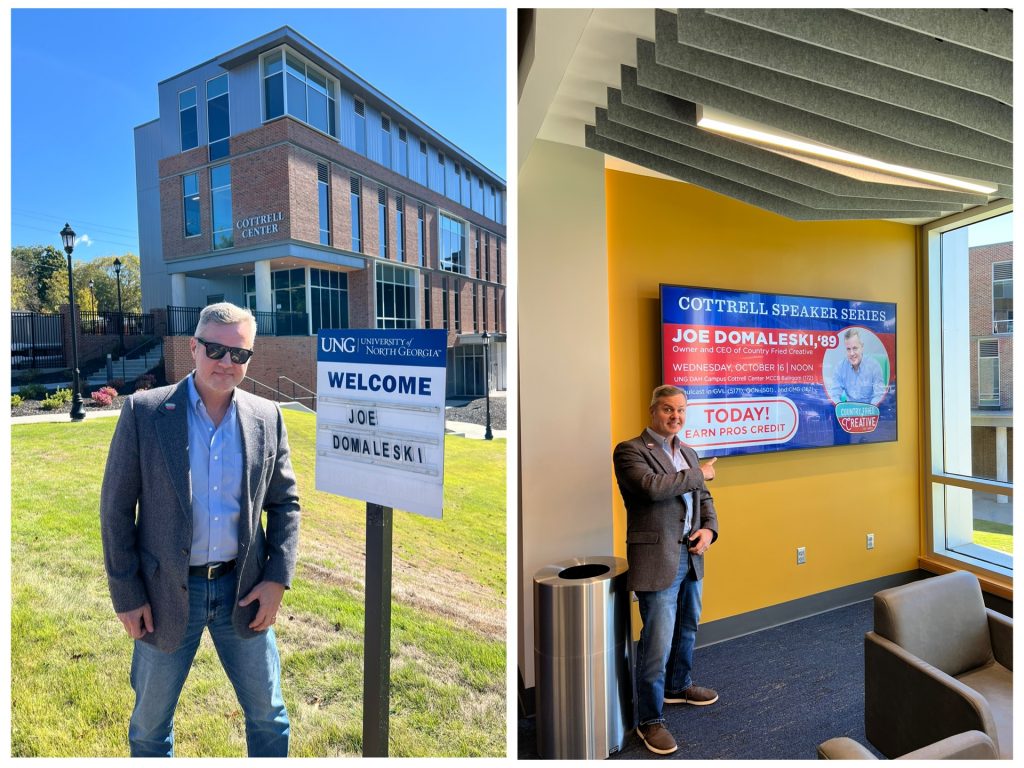
I got my own parking space and name up on the signage at UNG! Photo/Mary Catherine Domaleski
So, how did this speaking engagement come to pass, and what did I say to the students?
First of all, let me say that UNG does a fantastic job of keeping in touch with alumni. Under the direction of my classmate Wendi Huguley (Executive Director of Alumni Relations), UNG helps keep us all in touch and up-to-date. In addition to newsletters and other forms of communication, social media also plays a role in helping us stay connected. Thank you to Kim Vickers, Director of Development for UNG MCCB, for reaching out on LinkedIn to follow up on an article I had written about Artificial Intelligence (AI). She asked if I would be interested in speaking at UNG and passed along my name to MCCB Dean Dr. Mary Gowan, who personally invited me. The date was set, and details were coordinated with MCCB Marketing Manager Kyle Huneycutt. Essentially, I was told I could talk about anything I wanted to share. We decided it would be nice to reflect on my time as a student and how that prepared me for life.
In the two months I had to prepare, we spent time at home going through old pictures. Back in the ’80s, we didn’t have camera phones, nor did we take pictures of everything we did. Nevertheless, I was able to dig up some old photos and began to put together my presentation. My staff at Country Fried Creative helped me format the slide show (thank you, Christina), so it wasn’t just a mess of pictures and bullet points. The big day of my presentation arrived on Wednesday, October 16, 2024. My wife, Mary Catherine, took off from work and accompanied me on the trip up to Dahlonega.
Dahlonega is not the sleepy little town it was in the ’80s. UNG sits right in the heart of town, just off the historic square. Although we’ve been back to campus a few times since I graduated, it’s been quite a few years. There are many new buildings, but the campus drill field is still there (named after UNG alumni and Fayette County resident GEN Bill Livsey). We pulled into the parking area next to the MCCB building and, as I mentioned before, were greeted with my own named parking space.
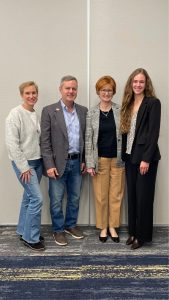
Mary Catherine Domaleski, Joe Domaleski, Dean Mary Gowan, UNG student Anna Thompson. Photo/Kyle Huneycutt
Once inside the building, several of my classmates were on hand to greet me. Thanks for stopping by, Wendi Huguley, Dr. John-David Rusk, and Mike Enright (who also went to high school with me). It’s always great to see old friends. Kyle Huneycutt led us into the presentation room, which was packed with students, staff, and faculty. Dean Gowan greeted me and said she was going to introduce a student, Anna Thompson, who would then introduce me. Thank you, Anna, for the warm introduction, and congratulations on your achievements at UNG.
The time had come for my presentation. What could I possibly say to keep everyone engaged? A colleague suggested I simply speak from the heart, so that’s what I did.
To level the playing field, I let the audience know that, in many ways, I was just like them—just older. A long time ago, back in the ’80s, I was a college student much like they are now. I was active in student government, Sigma Chi Fraternity (several current members showed approval with a snap—IYKYK), ROTC, and other campus activities. All of those experiences at UNG helped prepare me for life, and I shared what I’ve learned in the 35 years since I graduated.
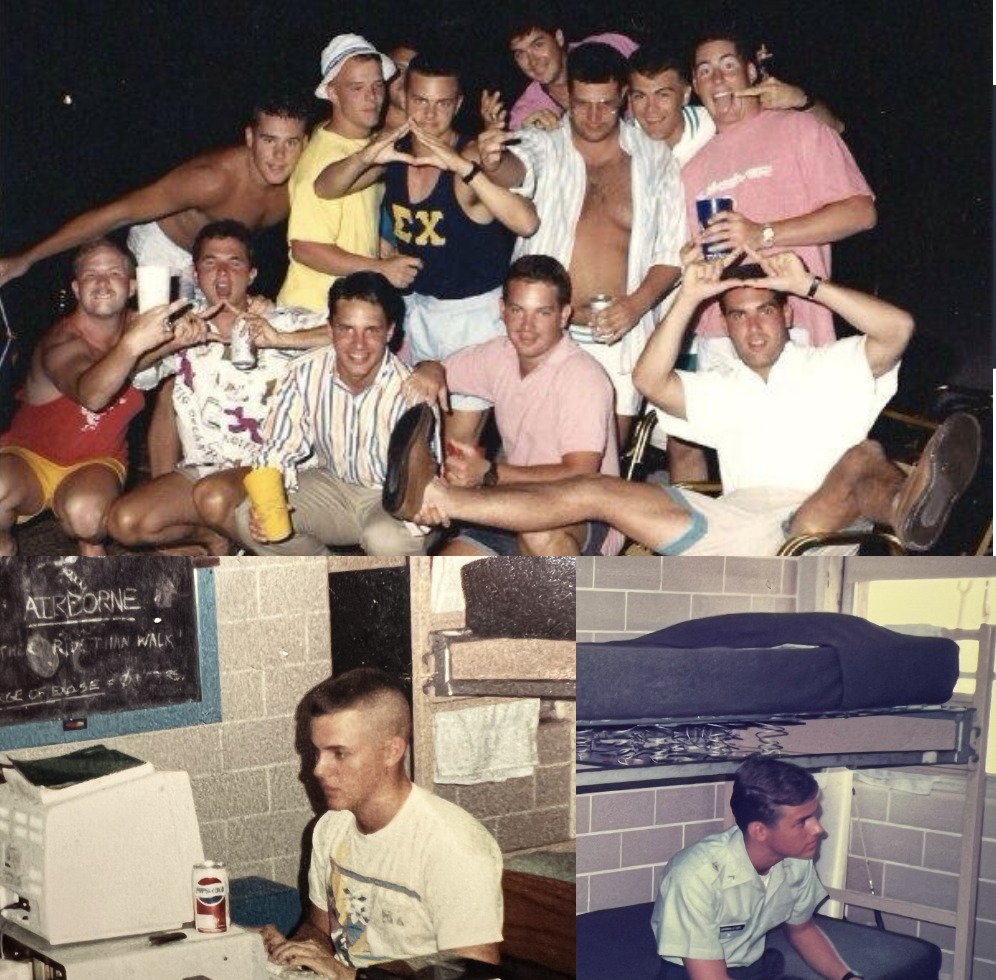
Scenes from my undergraduate college days back in the 80’s at UNG/NGC. Photo/Joe Domaleski
Here’s what I shared.
1. Get Comfortable Being Uncomfortable
Embrace challenges as opportunities for growth. Push your mental comfort zone by tackling demanding tasks—solve a tough puzzle, dive into complex reading, or learn a new skill to strengthen your mind. Step outside your social comfort zone by meeting people from different backgrounds, attending new events, or taking on leadership roles. And don’t forget physical challenges—whether it’s a GORUCK Trailblazer event or running a marathon, these tests build resilience and adaptability.
2. Choose a Life Companion
Having someone by your side can make all the difference. Life isn’t a solo journey; having a partner who supports and challenges you makes it richer. Someone who’s there through the ups and downs will add meaning and depth to every moment. Success and setbacks are easier to handle when you have a companion who’s got your back. Thank you Mary Catherine for being my life companion.
3. Stay Grounded
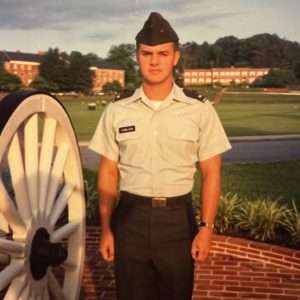
Me on my graduation and commissioning day at UNG/NGC In June 1989. Photo/Ed Domaleski
UNG taught me core values that continue to guide my life: Excellence, Student-Focus, Integrity, Engagement, and Service. Staying grounded means remembering these values and letting them shape your actions. Excellence pushes us to give our best; integrity keeps us honest; engagement encourages us to connect meaningfully; service reminds us to give back; and a student-focus reminds us to never stop learning. Holding onto these values is like having a compass—it keeps you on track, even when life gets complicated.
4. Prioritize Relationships
Invest in people, not just things. Relationships are worth more than any material success. Time spent with family, friends, mentors, and colleagues is time well spent. At the end of the day, it’s the connections you build that really matter—they’re the legacy you leave behind, not the stuff. Developing meaningful relationships will help you in both your personal and professional life. The adage “it’s not what you know, but who you know” is true.
5. Keep Learning
Challenge yourself: seek out new learning opportunities, whether through formal education, hobbies, or personal projects. Staying curious and adaptable keeps your mind sharp and ready for whatever comes next. Embrace lifelong learning, especially as you get older—it’s key to maintaining cognitive health and staying relevant in a changing world. At every stage of life, there’s always something valuable to learn, and it’s never too late to pick up a new skill or perspective.
6. Care for Your Body
Your health is the foundation for everything else. Take care of both your physical and mental well-being so you can tackle life with energy. I’ve found that when I invest in my health, I’m better equipped to handle challenges and take on new goals. Good health fuels everything, from work to hobbies, so make it a priority.
7. Proceed with Uncertainty
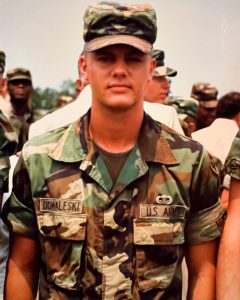
That’s me in 1987 with a shiny new set of Airborne wings. Jumping out of airplanes was one way I faced uncertainty! Photo/Ed Domaleski
Life doesn’t come with a roadmap, and sometimes, success means stepping into the unknown. Take calculated risks and embrace uncertainty—it’s often where the best growth happens. For me, that’s meant diving into big changes even when I didn’t have all the answers. I went to North Georgia, my first time away from home, and later joined the Army, where I jumped out of airplanes. I went to graduate school while working full-time, got married, learned web design in the ’90s, and had kids. I qualified for the Boston Marathon, completed several Ironman triathlons, and started a business that almost went under in a recession. Now, I’m working on a second act by going back to graduate school. Each step came with uncertainty, but each also brought valuable lessons and growth. Embrace the unknown—it’s worth it.
What I’m Doing Now and the Importance of Education
Today, I’m grateful for the journey that’s led me to where I am. I’ve been fortunate enough to build and run a successful business as President and CEO of Country Fried Creative (CFC), and I’m proud of the impact we’ve made in our industry. Being involved in the local community has always been important to me, and I’ve had the opportunity to participate in various events, initiatives, and leadership roles. I believe in giving back and sharing what I’ve learned along the way. Education has been a constant foundation for my success, and I live by the motto Always Be Learning (ABL). Currently, I’m a graduate student at Georgia Tech and guest lecturing at several local universities. Education opens doors, drives growth, and keeps us prepared for what’s next.
Believe in yourself, pursue your passions, and make a positive impact.
After the presentation and posing for pictures, Mary Catherine and I were invited to a private catered luncheon where we got to share further with select students and faculty. In addition to sharing my knowledge, I learned a few things myself. For students and parents, college is more than a piece of paper—it’s also about building a network of connections that will help later in life. You can’t get that from watching online videos.
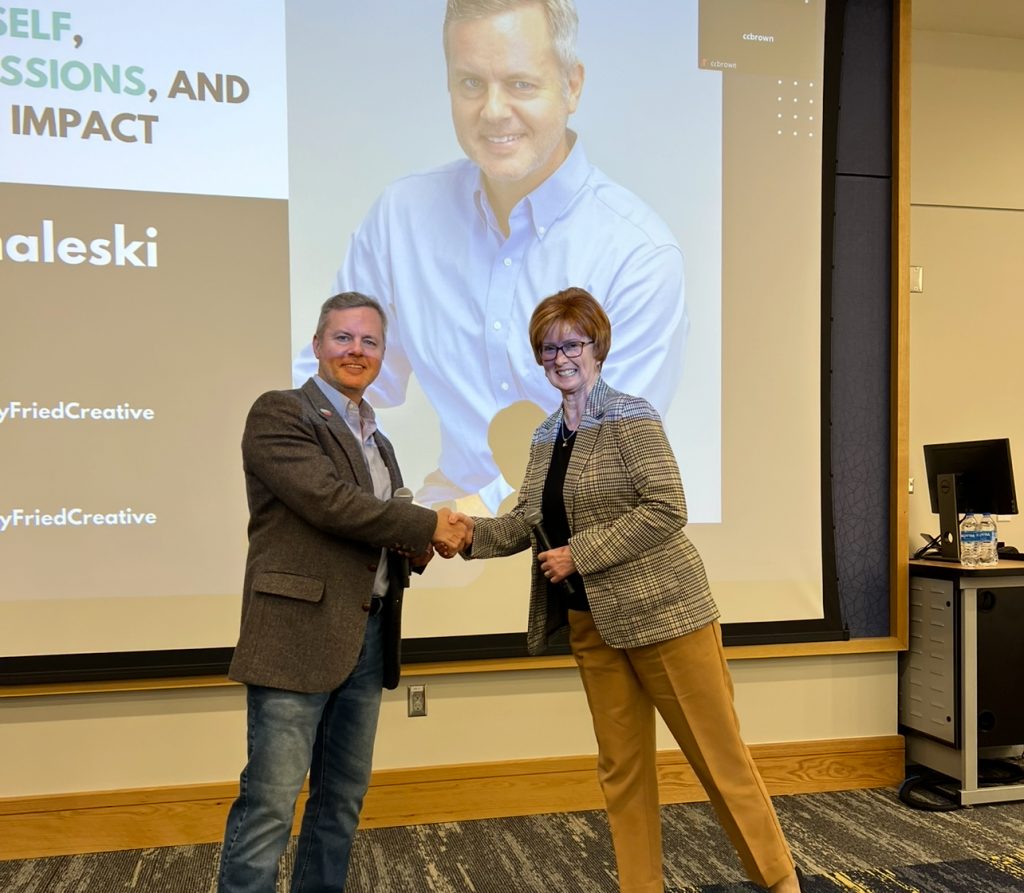
Me with Dr. Mary Gowan, Dean of the UNG Mike Cottrell College of Business. Photo/Mary Catherine Domaleski
I was also very impressed by the dedication, knowledge, and commitment that each of the faculty demonstrated. Many think that college professors have lost touch with reality, but that’s not what I saw. The educators sharing lunch with me were all experienced business professionals with a desire to share their knowledge and experience with students and the community. Local colleges and universities can provide much-needed guidance and assistance to the business community and vice versa.
Going back home to UNG as a guest speaker was an honor and the chance of a lifetime. Sharing my journey and lessons with the students was a rewarding experience, and I hope they left feeling inspired. I’m grateful for the opportunity to engage with the next generation and to see firsthand the dedication of UNG’s faculty and students. Education is more than just gaining knowledge; it’s also about building relationships. No matter where life takes us, there’s always an opportunity to make connections, to learn, to grow, and to contribute to something greater than ourselves. I’m proud to be a UNG alumnus. Go Nighthawks!
[Joe Domaleski, a Fayette County resident for 25+ years, is the owner of Country Fried Creative – an award-winning digital marketing agency located in Peachtree City. His company was the Fayette Chamber’s 2021 Small Business of the Year. Joe is a husband, father of three grown children, and proud Army veteran. He has an MBA from Georgia State University and enjoys sharing his perspectives drawing from thirty years of business leadership experience. Joe is a recipient of the Peachtree City Rotary Club Business Leader of the Year Award for 2024. Sign up for the Country Fried Creative newsletter to get marketing and business articles directly in your inbox. You can connect with Joe directly on LinkedIn or follow his new blog Marketing Data Science for more insights and updates.]
by Joe Domaleski | Oct 21, 2024 | Blog, Business, Columnists, Community, Front Page, News Center, Opinion, Top News
This is not an easy post to write. By the time you read this, our much-loved dog Thor will have crossed the rainbow bridge. He’s earned his rest and will be sorely missed. What makes this extra hard to write is that right now, as I type this, it’s Friday afternoon, October 18, 2024, and Thor is resting at my feet—something he’s always loved to do since he was a puppy. In fact, he’s snoring!
I’m not sure whether an unexpected or a planned goodbye is harder. For my fellow dog (and pet) lovers, you probably understand what we’re going through. No, a dog is not a human—but in many ways, dogs reflect some of the best qualities we humans often lack. I’d like to share with you the story of Thor, the bestest boy who made our lives better for the past twelve years.
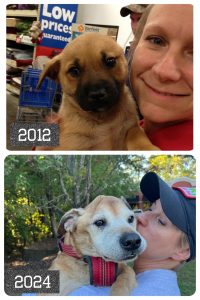
Thor’s first day with us in 2012 and his last day with us in 2024. Photo/Joe Domaleski
Thor’s “gotcha day” was December 22, 2012. We adopted him as a seven-week-old Christmas rescue puppy. He was the runt of his litter, with a rust coloring that stood out from his darker-colored siblings. While the other puppies were yapping, as puppies do, Thor calmly trotted over to the fence and approached us through the grating. I can truly say that he picked us, not the other way around.
At the time, my (now grown) kids were much younger and excited to welcome a new puppy into the family. My daughter Tori slept with him on the floor during his first night in our house. But what should we name him? After tossing around ideas for a few days, we settled on Thor—Marvel’s Thor movie had just come out and was popular at the time. We even named his crate “Asgard,” after Thor’s home in Norse mythology.
We were told that Thor was a mix of Rhodesian Ridgeback and Boxer. He definitely had the look of both breeds, with the strong, muscular build of a Boxer and the distinctive Ridgeback coloring. Thor was more than just a pet—he was a full-fledged member of our family. For the past twelve years, he’s participated in most of our family adventures.
Thor grew up alongside our children, joining us on family trips, hikes, and vacations. Whether it was lounging on the porch, chasing after balls in the yard, or just napping at our feet, Thor was always nearby, providing us with his steady, loving presence. In fact, lying near my feet is something he’s always loved doing ever since he was a puppy.
Because I work from home a lot, Thor naturally bonded to me first as the “Alpha Male,” and most of my family will tell you that he was a daddy’s boy. Here are some of our favorite memories of Thor:
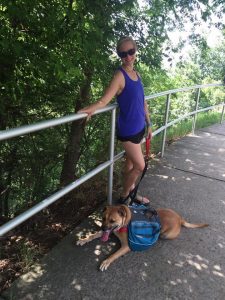
Mary Catherine and Thor take a break after hiking up Kennesaw Mountain. Photo/Joe Domaleski
- Learning the basics: Taking him to doggie obedience school, where he graduated by learning sit, stay, come, heel, and “high five.” Thor especially enjoyed “high five” over the years.
- Hiking: Thor accompanied us on many hiking trips, including treks up Mt. Pisgah in western North Carolina and weekly hikes out at The Ridge Nature Area. In fact, Thor was there on opening day when The Ridge first opened.
- Camping: One time in Brevard, we were camping in 25-degree weather, and Thor kept us warm in the tent. There’s nothing like a dog in your sleeping bag for a space heater.
- Runs & walks: Numerous runs and walks along the Beltline trail over the years as it was being built—first as an abandoned rail, then a dirt path, and now a paved superhighway of bikes and scooters. Thor was with us to see it all.
- Home protection: Serving as our virtual alarm system. We have a long gravel driveway, and Thor was always the first to let us know when a car approached.
- Mom’s helper: Some years ago when Mary Catherine drove a school bus, she parked it at home. Every morning Thor would go out to the bus with her during the pre-trip inspection.
- Chasing soccer balls: When the kids were little and played soccer, Thor had a hard time sitting still on the sidelines as the soccer ball was kicked around. At home, he loved to chase soccer balls in our yard, even deflated ones. He did this until his health declined a few months ago.
- Peanut butter: Most dogs love peanut butter, and Thor was no exception. We used to love giving him empty peanut butter jars to lick and play with. If you’ve never seen a dog try to lick a peanut butter jar clean, you’re in for a treat.
- Holding hands: Ever since he was a puppy, Thor loved to reach out a paw and put it on our legs or, even better, hold his paw with our hands. He continued to do this right up until the end of his life.
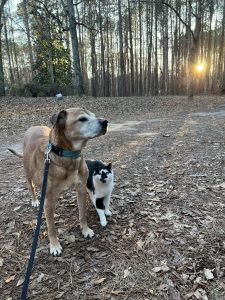
Thor with his best friend, Max the girl cat. Photo/Joe Domaleski
Over the years, Thor became friends with other animals in our family. He more or less split the house with Angel, our house cat, and each had their own “territory.” Our daughter Alex’s dog, Beesly, was a friend of Thor’s and stayed with us from time to time. Thor and Beesly loved playing tug together and getting into trouble. Two years ago, “Max the girl cat” was a stray who took over our carport. Max and Thor became fast friends and were inseparable when we took Thor outside. Sadly, Max passed away just one week ago. I like to think that Thor and Max are together again, wherever pets go after they die.
Last spring, we adopted another rescue dog—Loki. Yes, we named him to honor the half-brother relationship between the fictional Loki and Thor. We’re so glad that Thor got to spend the last six months of his life becoming friends with Loki. They were great together. We’re not sure how Loki is going to react without Thor.
As with all dogs, there came a time when we noticed Thor slowing down. Three years ago, he suffered a stroke. It was during COVID, and we didn’t know what to make of it. At the time, the vet told me that dogs tend to be more resilient in recovering from a stroke. We were cautiously optimistic, even though I had to pick him up to take him outside, and we had to feed him by hand. That lasted almost three months, but being the strong dog he was, Thor pulled through and made a remarkable recovery. He was even chasing soccer balls again soon after.
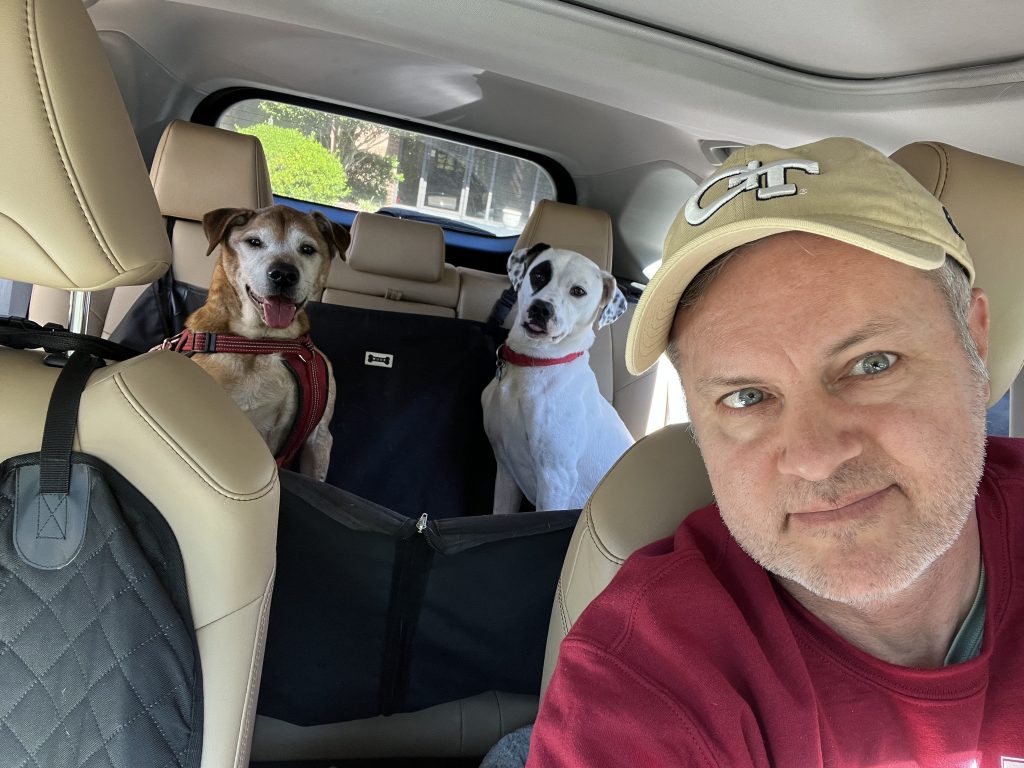
Thor and Loki enjoy a car ride together. They were good friends. Photo/Joe Domaleski
But in hindsight, he never fully regained his total strength. When Thor was younger, he used to run with us. Over the past year, we noticed that Thor had trouble going more than a few miles, so our walks were largely confined to our one-mile-long street. Some of my best memories of Thor were taking walks up and down that street. This summer, it became clear that his quality of life was worsening, and we took our last one-mile walk together back in July. We still walked up and down our driveway, but Thor’s back legs just didn’t want to cooperate. Some days were better than others.
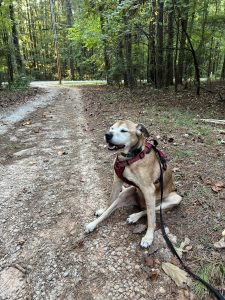
Thor takes a break during a walk down our driveway. Some days those back legs just didn’t want to cooperate. Photo/Joe Domaleski
A week ago, we took him to the vet. We got the bad news we didn’t want to hear and decided that it was time to let him go. As I’m writing this, I can tell you that we’ve had a great final week with Thor. We’ve done all the things we wanted to do—lots of car rides, limited walks, and he even got to hang out with us during one of our ruck club workouts. It’s strange knowing this was his final week.
For those who have never had the bond that comes with sharing your life with a dog, it can be hard to explain. Thor was there for us through all the ups and downs—whether it was dealing with bad days, enjoying the good ones, or getting through the tough times. He gave us his unwavering loyalty. He was more than a dog; he was our friend, our protector, and our comforter.
Now comes the hard part. Everything up until this point was written on Friday, with Thor by my side.
Thor is no longer by my side. I’m writing to you now over the weekend, after he was put to sleep. Saying goodbye to Thor is one of the hardest things we’ve had to do as a family. On Friday afternoon, I loaded Thor into our car and picked up my wife, Mary Catherine, from work. It was a very strange feeling knowing this was his last car ride with us. We got to the vet’s office a little early so that we could spend some final moments with Thor outside. I’ll always cherish this last final picture together as a family. He was so happy, and he made us happy.

Our final picture together as a family on Friday, October 18, 2024. RIP Thor, you will be missed. Photo/Joe Domaleski
Once inside, the staff was very professional and understanding. I won’t go into details, but it was very quick and peaceful. “Being put to sleep” is an accurate description—it takes less than a minute. We’d like to thank Dr. Tim Jackson and the staff at Fayette Veterinary Medical Center for making Thor’s final moments special.
As a final treat, they brought out the forbidden treats—chocolate! Yes, Thor died eating chocolate Hershey’s Kisses, and what an awesome way to go. Mary Catherine and I held him through the end. My lasting memory will always be Thor’s eyes. When he was a puppy, he looked at us with absolute trust and affection. Over the years, we came to regard Thor in the same way—with trust and affection. In his final moments with us, Thor continued to look at us with those same puppy eyes. Those eyes communicated love and complete trust in us that this was for the best. He reached out a paw, and we held it as he closed his eyes for the last time. When it was over, he was asleep for good.
I don’t know what happens to dogs when they die—none of us do. I like to think he’s in a better place now, free from pain and running through a big yard like he did when he was younger. I took the following picture about this time last year. This is what I hope heaven looks like.
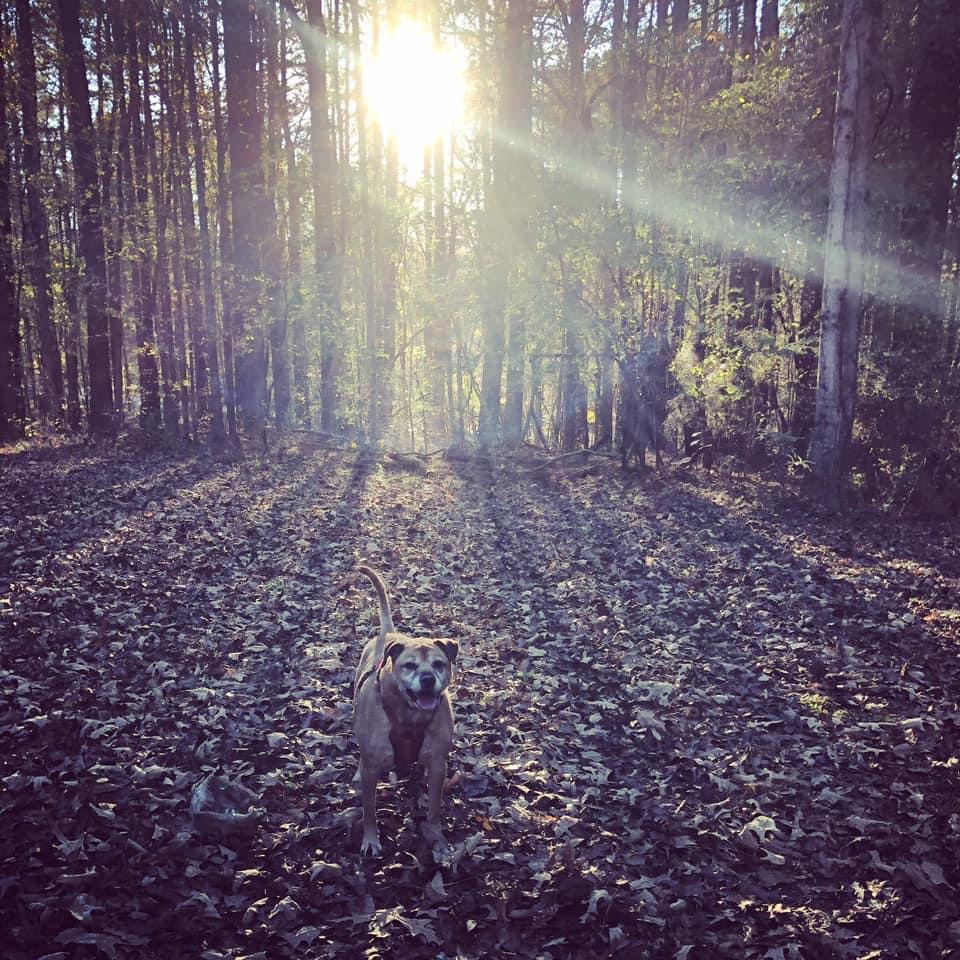
This is what I hope heaven looks like. Until we meet again, goodbye sweet Thor. Photo/Joe Domaleski
Thor, you’ve given us over twelve years of love and loyalty. You’ve earned your rest, sweet boy, and we’ll miss you more than words can say. Thank you for being the bestest boy we could ever have asked for.
[Joe Domaleski, a Fayette County resident for 25+ years, is the owner of Country Fried Creative – an award-winning digital marketing agency located in Peachtree City. His company was the Fayette Chamber’s 2021 Small Business of the Year. Joe is a husband, father of three grown children, and proud Army veteran. He has an MBA from Georgia State University and enjoys sharing his perspectives drawing from thirty years of business leadership experience. Joe is a recipient of the Peachtree City Rotary Club Business Leader of the Year Award for 2024. Sign up for the Country Fried Creative newsletter to get marketing and business articles directly in your inbox. You can connect with Joe directly on LinkedIn or follow his new blog Marketing Data Science for more insights and updates.]























